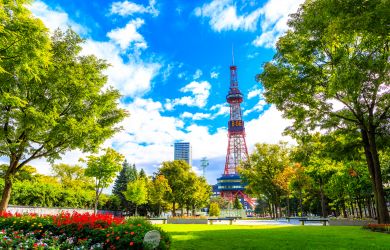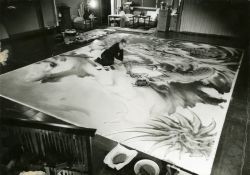
Originally published on metropolis.co.jp on January 2012


Where to travel this year? You’ve been to Kyoto, done Hiroshima and Hokkaido. Those spots might get pretty crowded in 2012, anyway, if Japan carries out its plan to offer 10,000 free round-trip tickets to foreign travelers. Nowhere interesting is immune to tourists, given Japan’s mobile population, but here are a few seasonal ideas for getting away from it all while staying in the archipelago.
While many Japanese head up north in February for skiing, consider staying in Tokyo and giving yourself a subtropical vacation. If you’ve got the patience for a 25-hour boat ride, hop aboard the Ogasawara-maru ferry and set sail for Tokyo’s final frontier: the Ogasawara Islands. Located some 1,000km south of Tokyo Station, the islands are a paradise of secluded beaches, turquoise waters and oodles of marine life; they were inscribed on the UNESCO World Natural Heritage List in 2011. First settled by Westerners and Polynesians in the 1830s, the chain was later annexed into Japan, and today Chichijima (Father Island) and Hahajima (Mother Island) are home to 2,400 people and part of Tokyo Prefecture.
When the ferry pulls into Chichijima’s Futami port, you might feel like you’re in the south Pacific with all the palm trees and sunshine, a relative paucity of concrete, and several locals of mixed ethnicity. But there’s plenty of sushi here, particularly the excellent shima-zushi featuring mustard and Chinese mackerel. The big fishies, though, are what bring people to Chichijima in February and March. Humpback whales come to breed and nurse their young, and sometimes can be observed swimming less than a kilometer offshore from the hills. For a closer look at these magnificent creatures, boat tours that go 10-20km out are the best option. Dolphin watching, snorkeling, and exploring the island’s jungles can easily fill the rest of a four-day trip before jumping back on the Ogasawara-maru for Minato-ku.

Spring is one of the best times to enjoy the outdoors in Japan as sakura trees burst in a riot of pinks and whites. Hiraizumi is another new World Heritage inductee where you can enjoy hillside blossoms amid temples dating to the reign of the Fujiwara clan in the 11th century. Its splendor was said to rival that of Kyoto, and its destruction by Japan’s first shogun inspired the poet Basho to leave this noted haiku: “Summer grasses—all that remains of warriors’ dreams.” Located in southwest Iwate Prefecture, Hiraizumi has thousands of historical sights including Chusonji temple’s Konjiki-do hall and Motsuji temple, whose restored garden is a reflection of Jodo, the Buddhist Pure Land. In May, both temples host the Spring Fujiwara Festival, a parade of locals in Heian-Period attire that evokes Hiraizumi’s heyday. As if the many statues of Basho weren’t enough, the colorful Gokusui no En poetry composition festival involves costumed courtiers penning verses while drinking sake from cups floating on a stream.
When it comes to festivals, few towns know how to party like Gujo Hachiman [pictured top left; middle left; bottom left]. This small castle town at the meeting of three rivers in Gifu Prefecture hosts a month-long dance extravaganza centering on the Obon summer festival of the dead. Gujo’s streets are lined with willow trees, canals and old merchant houses, recalling Kyoto or Takayama without the crowds. But it’s a different story in August when thousands of people descend on it for Gujo Odori—everyone dons yukata and geta clogs to get down. The festival peaks on four mid-August all-nighters called tetsuya odori, coinciding with Obon. Large dancing circles form to the tune of singing, shamisen and flute. Locals are eager to teach visitors their dances, and even if you’re not lucky enough to visit during the festival you can get pointers from dancers at the Hakuran-kan museum; Gujo’s castle, meanwhile, provides fantastic views over the valley and its rivers are perfect for fishing or cooling off on sweltering days.
If you’re not burning calories by dancing, you might as well be singeing your skin by bathing. Autumn is best enjoyed with an eyeful of crimson-gold leaves and an outdoor bath. For a bit of both, head to Hotaka, northwest of Matsumoto in Nagano Prefecture. Its broad valley at the foot of the Japan Alps is home to the country’s largest horseradish farm, Dai O Wasabi Nojo, and JR Hotaka Station, where buses and taxis run up to a veritable bather’s Disneyland, Nakabusa Onsen [pictured top; middle right; bottom right]. It’s an old, rambling collection of indoor, outdoor and sand baths, including a few scalders and a hollowed-out log that’s just big enough for one person—or two if you squeeze together. This secluded, undeveloped gem is closed during the winter months, but if your timing is right, the winding mountain road climbing to it will be overhung with exploding autumn colors while the towering northern Alps will be capped with snow. Just the right time to start thinking about an island vacation.





